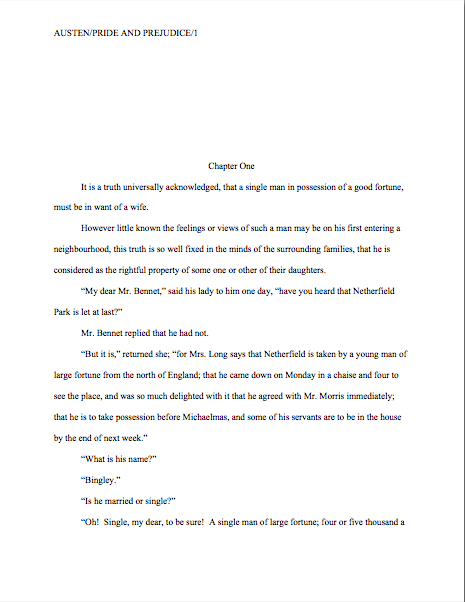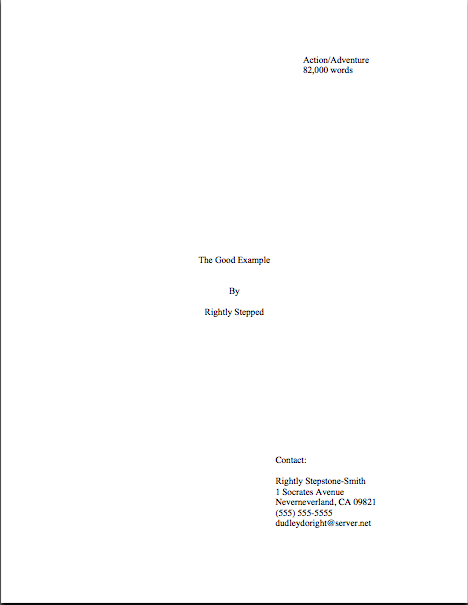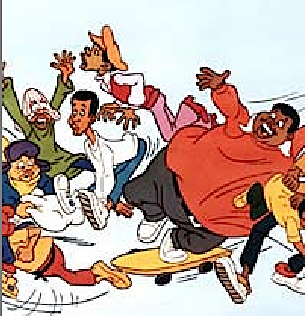The age of miracles has not yet vanished, my friends. Remember that yard renovation we started way back in, oh, March? Or was it in April, or 2003, or the era of the Visigoths? Today, after what felt like an entire Bronze Age of delays, the landscapers showed up (in itself something of a miracle), cleared away the debris that they had left artistically dotting our neighborhood, waved their hands over the heaping piles of sod that have housed a mole-and-squirrel theme park for months now — and violà, we abruptly have a very lush lawn.
I’m not talking just healthy, mind you — this is downright bourgeois. I haven’t seen greenery this decadent since I was a student at Harvard, when the grand old school would banish the students from the trampled lawns a few weeks before graduation and roll out new ones, so the Yard would look nice for the soon-to-be-visiting alumni.
Oh, as if Harvard’s the only university that does it.
Our new, croquet-worthy lawn seems like an apt metaphor for today, when I shall be wrapping up this week’s micro-series on SASEs and other things an aspiring writer might conceivably ship to an agent or editor. You could always go the Rolls Royce route, overnighting every scrap of requested paper or even having a bike messenger deliver it, but why shell out the dosh?
In the end, whether the yard boasts a pelt-thick lawn or the most modest rock garden, you will want to impress the recipient with the house, if you catch my drift.
On the off chance that anyone out there didn’t, allow me to make it plainer: too many aspiring writers waste scads of money speeding up the delivery time between their houses and a requesting agency. Overnighting a submission is utterly unnecessary; it won’t win you any Brownie points whatsoever with Millicent the agency screener, and it most assuredly will not get her boss to read your manuscript any faster.
Save your money for something else — nice paper upon which to print the submission, for instance.
With an eye to helping submitting writers figure out what is and isn’t a necessary expense, I have spent the last couple of posts talking (in part) about ways to save money when shipping requested materials to an agent or editor. We writers don’t talk about this very much amongst ourselves, but the fact is, the process of finding an agent can be pretty expensive.
Did a few of you new to the process just choke on your cornflakes? “Wait just a minute, Anne,” a sputtering few still working up to the marketing stage cry. “Surely, you’re talking about the entire agent-finding process being expensive, right, not just the shipping-off part? I mean, really, I’ve just shelled out hundreds of dollars to attend a writers’ conference so I could meet agents to query — I hadn’t thought at all about the the next step, mailing off requested materials, taxing my piggie bank.”
I hate to be the one to break it to you, but it might.
At minimum, the costs of producing a professional-looking submission packet include shipping (both there and back), boxes, paper, ink cartridges, wear and tear on your computer, and a ton of your time that could be used for, well, anything else. While individually these may not seem as potentially scarifying to your checking account as the even greater optional costs of attending conferences, entering contests, and hiring freelance editors like me to help pull your submission into tip-top shape, it all adds up.
So much so that if you’re a US citizen and marketing a book, it’s worth looking into the possibility of filing a Schedule C for your writing as a business, so you can deduct these expenses. Talk to a tax professional about it (I am not a tax professional, so I cannot legally give you advice on the subject), but do try to find one who is familiar with artists’ returns: ones who are not will almost invariably say that a writer must sell work in a given year to claim associated expenses, but that’s not necessarily true.
Yesterday, as part of my ongoing quest to save you a few sous, I brought up the case of Antoinette, the writer who rushed out and overnighted her manuscript, then waited seemingly endlessly by the phone for the agent of her dreams to respond. I went into her possible reasons for doing this — rather than sending the book regular mail or the more affordable 2-3 day Priority Mail rate.
Today, I want to talk a bit about the other two primary motivators for jumping the proverbial gun: fear and eagerness.
To let one of the most poorly-hidden cats out of one of the most hole-ridden bags in the business, new souls walking the planet are in a greater hurry than a writer who has just received a request for materials. Especially if that request comes at the end of a long period of querying or after a particularly intense conference, it’s far from uncommon for the lucky writer to decide, wrongly, that the only possible response is to drop everything else in her life — calling in sick to work, if necessary — to throw together the requested materials and get them out the door as close to instantly as possible.
One of two rationales typically underlies this approach. In the first, the writer says, “Oh, my God, this request to see all or part of my manuscript must be a fluke. I’d better get these materials under the agent or editor’s nose within the next few hours, before either (a) s/he changes her/his mind, (b) the malignant forces that rule the universe cause the wall of indifference to art to rise again, this temporary fissure mended, or (c) both.
Whichever thunderbolt the hostile gods of publishing are planning to send his way, the fearful writer wants to make absolutely sure that his submission is out of his hands well before it strikes.
Who cares that he hasn’t had time to double-check his submission for easily-overlooked gaffes, or that overnighting that package will cost four times as much as sending it via regular mail? He’s trying to submit before the agent of his dreams comes to his/her senses.
In reality, of course, it just doesn’t work like that: a request to submit materials will be every bit as good two weeks from the day it was made as it was in the moment. Or two months.
Also, as I MAY have hinted gently above, the writer’s speed in getting the submission to the agent will not make one scintilla of difference in how quickly a manuscript is read — or even the probability of its moldering on an agent’s desk for months. Certainly, whether the agent’s receiving the manuscript the next day or in the 2-3 days offered by the more reasonably priced Priority Mail will make no appreciable difference to response time.
Especially during summer conference season, since most of the industry goes on vacation from early August through Labor Day. Or around Christmastime, when the biz more or less shuts down.
The other, more common rationale for too-swift submission is eagerness. “Whew!” the writer who has just received a request to submit says. “The hard part is over now: my premise has been recognized as a good one by an agent who handles this sort of material. From this point on, naturally, everything is going to happen in a minute: reading, acceptance, book sale, chatting on Oprah.”
You know, the average trajectory for any garden-variety blockbuster. Who wouldn’t want to cut a week, or even a few days, out of tackling that bright future?
I sincerely hope that yours is the one in eight million submissions that experiences this second trajectory — and that’s the probability in a good year for publishing — but writerly hopes to the contrary, a request for submission is the beginning of the game, not the end. The fact is, as small a percentage of queries receive a positive response (and it’s unusually under 5%), even fewer submissions pass the initial read test.
Or, to put it the terms we typically use on this blog, it takes even less provocation to cause Millicent shout “Next!” over the first page of a manuscript than over a query.
There’s a reason that I grill you on the details, you know: I want yours to be in that top few percentiles. Which is why I would rather see your resources and energy going toward perfecting the submission itself, rather than getting it there with a rapidity that would make Superman do a double-take.
This is true, incidentally, even when the agent has ASKED a writer to overnight a project. Consider the plight of poor Gilberto:
Submission scenario 2: Gilberto has just won a major category in a writing contest with his thriller, DON’T PAY ANY ATTENTION TO THE MAN BEHIND THE CURTAIN; HE’S NOT REALLY CARRYING AN AXE. During the very full pitching day that follows his win, five agents ask him to send submissions. Seeing that he was garnering a lot of interest, Maxine, the most enthusiastic of the agents, requests that he overnight the manuscript to her, so she can respond to it right away.
Gilberto says yes. He actually does overnight the packet.
However, being a savvy submitter, he submits simultaneously to the other five via regular mail right away. He does not tell Maxine — or any of the others — that he is letting many agents read his manuscript at the same time. He writes REQUESTED MATERIALS — FIRST PLACE, CONTEST NAME on the outside of every submission and mentions the request in the first line of his cover letter, to minimize the possibility of his work being lost in amongst the many submissions these agencies receive.
Within three weeks, he’s heard back from all but one of them; puzzlingly, Maxine is the last to respond. And when she finally does, six weeks after he overnighted her the manuscript, it’s with form letter. This most enthusiastic of agents has rejected him without even telling him why.
What did Gilberto do wrong? Not much, really, except for saying yes to an unreasonable request — and not telling the agents that they were competing over his work. That not made his submission process more expensive than it needed to be, but also more or less eliminated any benefit he might have derived from the contest-generated buzz about his book.
Let’s take his missteps one at a time. Why was Maxine’s request that he overnight the manuscript unreasonable?
In essence, the situation was no different than if Maxine had asked him to leave the conference, jump in his car, drive three hours home to print up a copy of his manuscript for her, drive three hours back, and hand it to her. In both cases, the agent would have been asking the writer to go to unnecessary effort and expense for no reason other than her convenience.
Yet as Maxine’s subsequent behavior showed, she had no more intention of reading Gilberto’s manuscript within the next couple of days than she did of reading it on the airplane home.
Okay, here is a pop quiz to see how much those of you who followed this summer’s series on conference pitching have learned: why did she ask him to overnight it at all?
Give yourself full marks if you said it was to get a jump on other interested agents. As I mentioned in the pitching series, agents tend to be competitive people — to many of them, a book project’s value will increase in direct proportion to how many other agents are interested in it.
The give-me-first-peek request is one way it manifests — yet another reason that it is ALWAYS in a writer’s best interest to make simultaneous submissions and queries, rather than approaching them one at a time.
Not clear why? For the same reason not telling all of the agents concerned that they were in potential competition over his work was a mistake: because they would probably have been a bit more interested had they known that.
What makes me suspect that not using his manuscript’s being in demand as a selling point harmed Gilberto’s chances of landing an agent. Okay, let’s think about it for a minute: why didn’t Maxine get back to him sooner?
In practice, of course, she could have had a lot of reasons — a death in the family, a problem with an existing client’s relationship with her editor, a particularly exciting negotiation, rehab…the list goes on and on. But any other possible factors aside, Maxine knew that if any of those other agents at the conference had made an offer, Gilberto would have contacted her — and when he didn’t, she could treat his might-have-been-hot property just like any other submitted manuscript.
In other words, jumping in and asking for a first peek cost Maxine nothing — it obviously affected her subsequent treatment of Gilberto’s work not at all — but guaranteed that she would be first to know about how his other submissions fared. And once she could safely assume that he had not been picked up by anyone else, the shiny gleam of being sought-after faded from his manuscript.
Now pause and consider the ramifications of Maxine’s attitude toward other agents’ interest levels for a moment. Picture them spread thickly across the industry. Let the possible effects ripple across your mind, like the concentric circles moving gently outward after you throw a stone into a limpid pool, rolling outward until…OH, MY GOD, WHAT DOES THIS MEAN FOR THE AVERAGE QUERY-GENERATED SUBMISSION?
Uh-huh. Not high on the average Maxine’s to-do list.
Explains quite a bit about why the agent who requested your first 50 pages doesn’t get back to you for two months, doesn’t it? While an agent expects that the writer querying her will be simultaneously querying elsewhere, the converse is also true: she will assume, unless you tell her otherwise, that the packet you send her is the only submission currently under any agent’s eyes.
This is why it is ALWAYS a good idea to mention in your submission cover letter that other agents are reading it, if they are. No need to name names: just say that other agents have requested it, and are reading it even as she holds your pages in her hot little hand.
I heard that thought go through some of your minds: I would have to scold you if you lied about this, just to speed up the agent’s sense of urgency. Ooh, that would be too strategic, clever, and unscrupulous. Sneaky writer; no cookie.
Okay, here’s the extra credit question: in the scenario above, Maxine already knows that other agents are interested in Gilberto’s work; she is hoping to snap him up first. So why didn’t she read it right away?
Give up? Well, Maxine’s goal was to get the manuscript before the other agents made offers to Gilberto, not necessarily to make an offer before they did.
Is that a vast cloud of confusion I feel wafting from my readers’ general direction? Was that loud, guttural sound a collective “Wha–?”
It honestly does make sense, when you consider the competition amongst agents. Maxine is aware that she has not sufficiently charmed Gilberto to induce him to submit to her exclusively; since he won the contest, she also has a pretty good reason to believe he can write up a storm. So she definitely wants to read his pages, but she will not know whether she wants to sign him until she reads his writing.
Because, as agents like to say, it all depends upon the writing.
Maxine’s met enough writers to be aware that it is distinctly possible that Gilberto’s response to his big win will be to spend the next eight months going over his manuscript with the proverbial fine-toothed comb, perfecting it before showing it to anyone at all. She would like to see it before he does that, if at all possible.
To beat the Christmas rush, as it were.
Even if she doesn’t get an advance peek, Maxine is setting up a situation where Gilberto will automatically tell her if any other agent makes an offer: he’s probably going to call or e-mail her to see if she’s still interested before he signs with anyone else. By asking him to go to the extraordinary effort and expense of overnighting the manuscript to her, she has, she hoped, conveyed her enthusiasm about the book sufficiently that he will regard her as a top prospect.
If she gets such a call, Maxine’s path will be clear: if she hasn’t yet read his pages, she will ask for a few days to do so before he commits to the other agent. If she doesn’t, she will assume that there hasn’t been another offer. She can take her time and read the pages when she gets around to it.
What’s the rush, from her perspective?
From the agent’s POV, asking a writer to overnight a manuscript is a compliment, not a directive: it’s the agent’s way of saying she’s really, really interested, not that she is going to clear her schedule tomorrow night in order to read it. And even if so, the tantalization will only be greater if she has to live through another couple of days before cloistering herself to read it.
So what should Gilberto have done instead? The polite way to handle such a request is to say, “Wow, I’m flattered, but I’m booked up for the next few days, and several other agents have already asked to see it. I can get a copy to you by the end of the week, though, when I send out the others.”
And then he should have sat down, read it IN HARD COPY and OUT LOUD to catch any glaring mistakes, and Priority Mailed it a few days later, accompanied by a cover letter reiterating that other agents are also reading it.
Tick, tick.
Sound daring? Well, let me let you in on a little secret: in the industry, the party who wants a manuscript overnighted is generally the one who pays for it. After a publisher acquires your book, the house will generally be paying for you to ship your pages overnight if they need them that quickly, not you. So by asking the writer to pay the costs, the agent is actually stepping outside the norms of the biz.
You need some time to wrap your brain around that last point, don’t you? Fine; I shall sign off for the day to go and run barefoot across that decadent lawn. Whee!
Keep up the good work!































